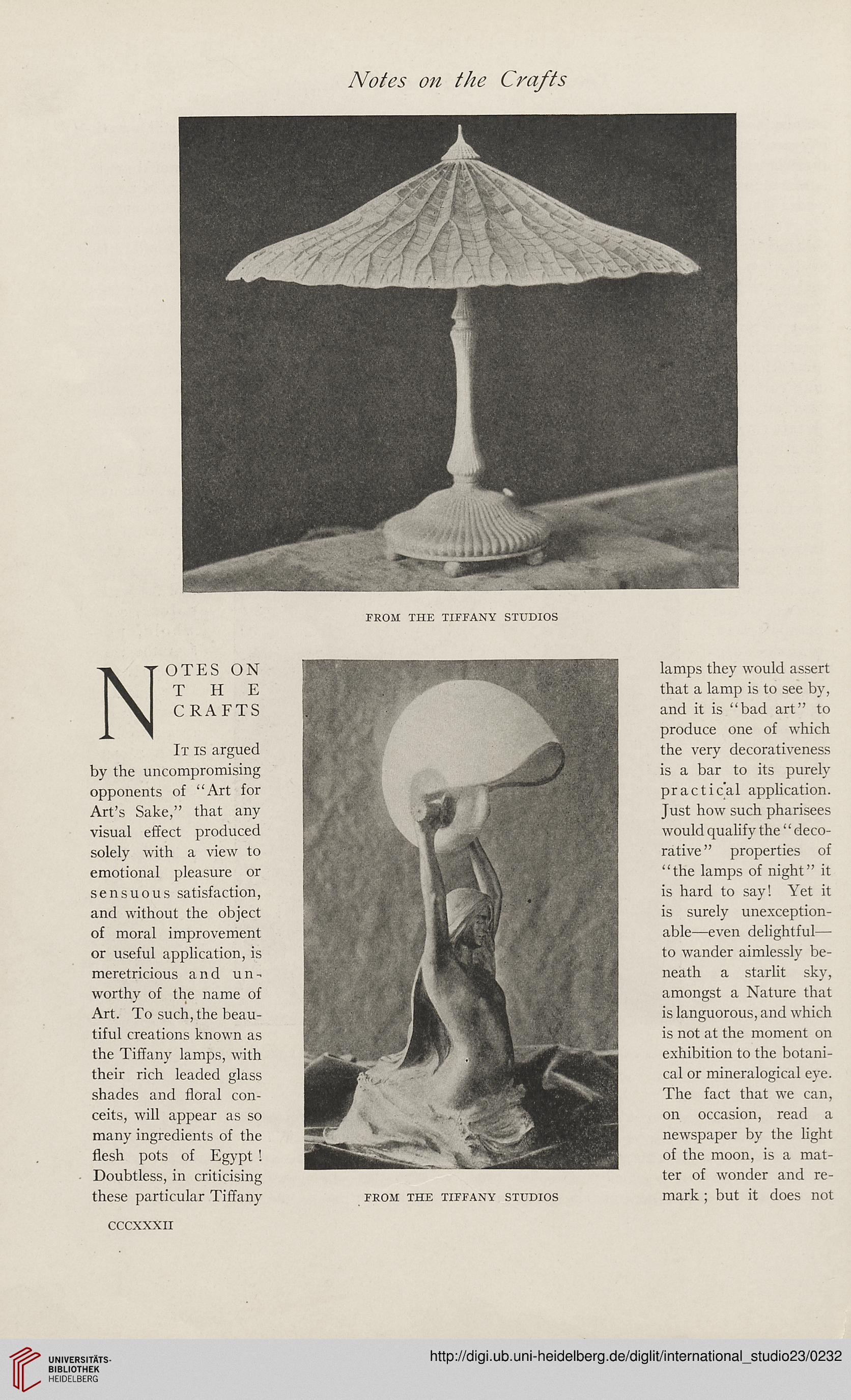Notes on the Crafts
FROM THE TIFFANY STUDIOS
Notes on
the
CRAFTS
It is argued
by the uncompromising
opponents of “Art for
Art’s Sake,” that any
visual effect produced
solely with a view to
emotional pleasure or
sensuous satisfaction,
and without the object
of moral improvement
or useful application, is
meretricious and un-
worthy of the name of
Art. To such, the beau-
tiful creations known as
the Tiffany lamps, with
their rich leaded glass
shades and floral con-
ceits, will appear as so
many ingredients of the
flesh pots of Egypt!
Doubtless, in criticising
these particular Tiffany
FROM THE TIFFANY STUDIOS
lamps they would assert
that a lamp is to see by,
and it is “bad art” to
produce one of which
the very decorativeness
is a bar to its purely
practical application.
Just how such pharisees
would qualify the “deco-
rative ” properties of
“the lamps of night” it
is hard to say! Yet it
is surely unexception-
able—even delightful—
to wander aimlessly be-
neath a starlit sky,
amongst a Nature that
is languorous, and which
is not at the moment on
exhibition to the botani-
cal or mineralogical eye.
The fact that we can,
on occasion, read a
newspaper by the light
of the moon, is a mat-
ter of wonder and re-
mark ; but it does not
CCCXXXII
FROM THE TIFFANY STUDIOS
Notes on
the
CRAFTS
It is argued
by the uncompromising
opponents of “Art for
Art’s Sake,” that any
visual effect produced
solely with a view to
emotional pleasure or
sensuous satisfaction,
and without the object
of moral improvement
or useful application, is
meretricious and un-
worthy of the name of
Art. To such, the beau-
tiful creations known as
the Tiffany lamps, with
their rich leaded glass
shades and floral con-
ceits, will appear as so
many ingredients of the
flesh pots of Egypt!
Doubtless, in criticising
these particular Tiffany
FROM THE TIFFANY STUDIOS
lamps they would assert
that a lamp is to see by,
and it is “bad art” to
produce one of which
the very decorativeness
is a bar to its purely
practical application.
Just how such pharisees
would qualify the “deco-
rative ” properties of
“the lamps of night” it
is hard to say! Yet it
is surely unexception-
able—even delightful—
to wander aimlessly be-
neath a starlit sky,
amongst a Nature that
is languorous, and which
is not at the moment on
exhibition to the botani-
cal or mineralogical eye.
The fact that we can,
on occasion, read a
newspaper by the light
of the moon, is a mat-
ter of wonder and re-
mark ; but it does not
CCCXXXII




